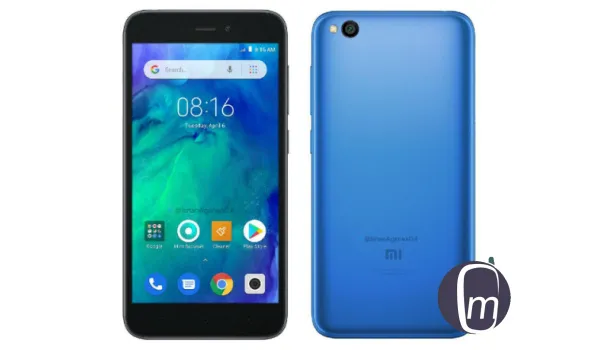The GSMA has formed a coalition to lower the cost of mobile phones – specifically entry-level smartphones – in Africa and Asia, but are they barking up the wrong tree?

A friend shared with me news of plans by the GSMA and a coalition of telecommunications operators, phone manufacturers, and financial institutions, among others, to bring down the cost of mobile phones in low- and middle-income countries (LMICs) in Africa and Asia. The GSMA (short for Groupe Spécial Mobile Association) is the umbrella body of mobile operators globally.
Members of the coalition include telecom operators MTN Group, Orange, Vodafone, Ethio Telecom, and device makers such as Huawei, ZTE, Honor, among others. Financial institutions members of the coalition include the International Finance Corporation (IFC) and the World Bank. Device ecosystem players like Google, Intelligra, and M-Kopa, among others, are also part of the coalition. It is an impressive efforts. We might calm them the mobile phone industry’s Avengers.
We’ve seen this before
This isn’t the first time the GSMA and partners (even with the involvement of Samsung) are trying to do this. It has been going on for more than six years, and yet here we are. In 2022, the GSMA published a report on how to make internet-enabled handsets more affordable in low- and middle-income countries. There have been efforts to do this, but it hasn’t and won’t yeild the kind of results we are looking for, because as far as I can tell, those involved are ignoring the foundational issues.
One recent GSMA report published in 2023 listed handset financing as one of the ways to lower the cost of acquisition. Please. That is not a reduction; that is enslavement. Low-income people will only get into more and more debt by going the financing route. That is no good for anyone but the smartphone manufacturer and their partners. Further impoverishing already poor people is not the way to lower the cost of mobile phones.
Any attempt to lower the cost of mobile phones in Africa and Asia (and indeed anywhere else in the world) is a good one. I really think that it is insane that anyone should have to sell a kidney or liver to use a smartphone. Why exactly do some smartphones cost even $500 (not to mention $1,500), when most of the features are never used or needed by the average person? It is insane. The average mobile user globally does not need half of the features built into those cell phones, even the most entry-level smartphones.
And it is this very factor that keeps bumping up the prices of smartphones, year after year. Apple keeps adding new features that most people live without into iOS and new iPhones. Google and their Android hardware partners keep adding new features that most people live without into Android OS and Android phones respectively.
The race to add more
Those phones keep requiring extra processing power and more RAM because of these new features that you do not need, do not use, and do not care about. Because of these additions, Android OS and iOS themselves are super- bloated now. And that isn’t all. Apps have become many times the sizes they used to be years ago.
For example, in 2015, the Facebook app size was 200MB. It is 1.4GB today in 2024. In case you didn’t get the memo, that means the Facebook app is now 7 times the size that it was in 2015, nine years ago. Low income people are already under massive financial pressure: requiring them to download GB-sized apps is not how to ease the burden on them. And with apps updating multiple times a week now, the problem gets even worse.
So, how are you going to lower the cost of mobile phones for middle and low income earners while racing ahead for the biggest, baddest bloat in mobile operating systems and apps, which consequently means that the device need more powerful processors and more RAM, and so cost more, and also meaning that it costs more to use those devices on a daily basis?
Just a few years ago, 3GB RAM was decent in an Android smartphone. Today, if your phone doesn’t have 4GB RAM, running multiple apps is frustrating. Why? Those apps are huge now. Ridiculously massive. Even Android Go, designed for entry-level smartphones, now requires more RAM and more powerful processors to run smoothly.
Do we also speak about how the average modern smartphone gets warm ever so often even when you have it lying on a table and doing nothing? Why? Because there is so much going on in the background without your active involvement and constantly communicating with remote servers somewhere. This involves the mining of your personal data every single second. It is massive business, and a drain on the resources of the user.
If you own a smartphone running Android 10 today, it is almost a nightmare to use. Apps are struggling to work and multi -tasking is a pain. There is nothing else wrong with those phones. The problem is that the powers that be are in a race forward and so are shutting the door in the faces of those who cannot afford to upgrade. It is a human-made problem. Stop forcing people to have to upgrade their smartphones (when those devices are not faulty) and much of the problem goes away.
There is no reason why anyone who buys a $100 smartphone should not be able to use it for 10 years without issues if it doesn’t develop a fault.
Who will bell the cat?
Good luck asking Apple to dial down on the mad race to squeeze everything into modern smartphones. But then, Apple has never pretended to be in the market for low and medium income earners. So, perhaps we can leave them out of this conversation.
Google at least pretends to be concerned about financially challenged humans. But will anyone ever be able to convince Google to dial down? If I were you, I would not bet on it. Google won’t. The company has made a lot of noise around Android Go for entry-level smartphones. The noise has not resulted in cheaper phones. Even A droid Go is bloating up and requiring more and more resources to make it run smoother. The solution to the challenge of how to lower the cost of mobile phones in Africa and Asia will not be found with Google tinkering with the software.
Back to the Basics
How many of those individuals who earn less than $2 a day are able to afford a smartphone and how many of them need half of the fancy features being packed into them? Their needs are basic. The first step is to stop selling them what they do not need and stop milking them dry. But this appears to be mission impossible. Google won’t stop (and neither will Apple).
If we are serious about affordable smartphones for low income earners, we need to get back to making phones that are more basic, and it starts with a ground-up approach from how the mobile operating system works, all the way to how the hardware works.
Personally, I will give anything to have a smartphone that does not include any of these wild and fancy functionality that keep being piled into today’s devices. For example, all these wild AI functionality are largely not needed and not used by most people. What do financially challenged people need QR codes? What bills are they paying with those? Why do their smartphones need to be connecting to the Internet every milli-second, using up their precious data, and heating up like a boiling ring? Why do they need their apla to update three times every week?
Get rid of a lot of those and the initial cost of acquiring phones will drop, the cost of using the phones will drop as well, and the replacement cycle will spread out and ease more financial pressure. I talked about a $100 smartphone earlier. Let me take it further. If we dial down on a lot of the mad bloat, there is no reason why a $50 smartphone should not exist and no reason why the owner should not be able to use it for 10 years without issues if it doesn’t develop a fault.
KAIOS initially looked like a promising alternative OS, but even that too went in the direction of cramming more and more functionality and apps into it. Bad move. The more you cram in, the less it meets the needs of people at the low end of the market. The more the costs rise.
Strip off
Yes, a $50 smartphone is possible. The problem is that the money-grabbing system doesn’t want it that way. The constant race to add more features keeps prices up. Strip off all the uneccesary till you have a basic smartphone that connects to the internet only when you need it to, and that has only the basic apps that most people need. I’d strip out all social media apps, for starters. All of them.
Navigation (maps) is an essential, so I would leave that in. Other features it would have would be email, web browser, rear camera (include a small mirror beside the rear camera and use that for selfies), clock, calculator and calendar. Messaging is important, so some compatibility with WhatsApp and Telegram, at the least, has to be in there. And that’s it. Throw everything else out. Everything else.
No; do not put Android OS inside it. Make it a proprietary platform but make it work with those few essential features listed above. Build a basic hardware around it. Limit the screen size to a maximum of 5.5 inches. This mad race for the biggest screens is part of the problem on the hardware front.
You could say what is needed is a touchscreen, Internet-enabled feature phone. That would be a good way to lower the cost of mobile phones for low-income earners. As people’s financial capacity improves, they can upgrade to an Android smartphone should they want.
Personally, if this basic smartphone existed, it would be an attractive propositions for even me, though I have the capacity to spend much more on a device. If someone ever comes up with a higher end version of it that has a more capable camera and at least 45W fast charging, I’m game. The modern smartphone is too chocked full of unnecessary features and distractions.
Join the Mobility WhatsApp Group to be notified of the most important articles and deals: Join now
